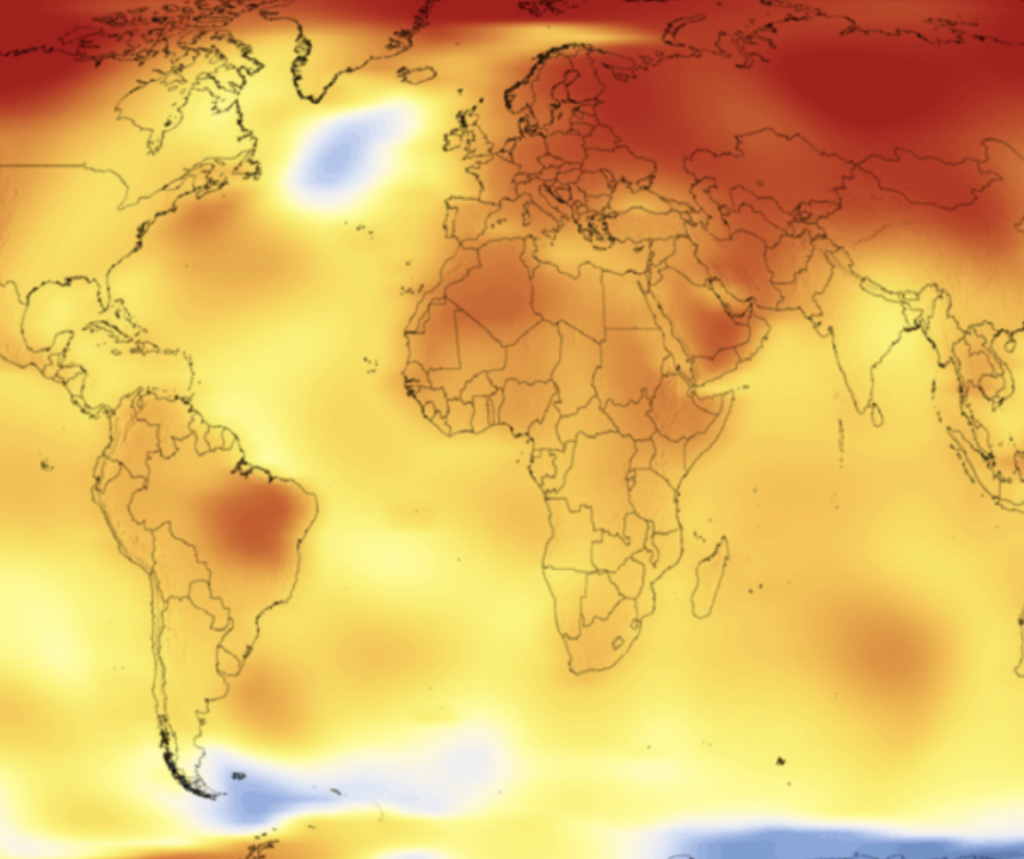As we have mentioned before – scientists warn that the world is likely to breach the 1.5c climate change threshold as soon as 2027. According to the Paris Agreement, which was set back in 2015, its main goal was to halt the increase in global temperatures well below 2c above pre-industrialised levels, and actively pursue efforts to limit the temperature increase to not more than 1.5C above pre-industrialised levels.
The year 2027 is only four years away. The fact we would be hitting this ceiling of 1.5c so soon is alarming. These heat waves around the world over the last few weeks are proof that things are changing, sadly, for the worse.

The world is now warmer than at any other time in the past 125,000 years. If you think 125,000 years is a mind-boggling time frame, consider the fact concentrations of carbon pollution in the atmosphere are now at their highest level for more than two million years.
Temperatures this summer around the world and in Europe are smashing records, that is apart from the UK, which is having a rather wet, cooler summer.
This heatwave, in European areas at least, is being caused by stable atmospheric conditions and stationary high pressure, also known as an anticyclone, which is associated with fine and calm weather.
The UK is not suffering the same heat wave due to the placement of the current high-pressure system – which is situated further south. This high pressure is thought to be a result of climate change.
Heatwave Danger:
It’s not just stressful, inconvenient or uncomfortable. When a heatwave hits, there are huge, life-threatening issues which we need to be aware of, and heat really impacts the following:
* Elderly or those with health complications are more likely to die as a result of a heatwave
* Homeless people are more likely to die from heatwaves due to limited sheltering options
* Babies and small children are at an increased risk of death as they can’t regulate their temperature as well as adults. They don’t sweat as much, and they also generate more heat than adults.
These heatwaves are proof we need to reduce our carbon footprint. Doing so will help limit the impacts of global warming.
How Does Carbon Dioxide Cause Global Warming?
Carbon, when released in the atmosphere, traps heat. This makes the planet warm up, and it’s this heat which causes all the problems associated with climate change. Carbon dioxide and other greenhouse gases trap heat in the atmosphere, which otherwise would have radiated out into space. By reducing carbon in the atmosphere, we are reducing the worst effects of global warming. The heat waves we are seeing currently, quoting Dr Mariam Zachariah, would be statistically impossible before the Industrial Revolution.
The way forward
There are a number of ways forward that we must embrace if we are to make a final last-chance attempt to avert the deadly impact of climate change. These include access to clean energy and technology, low-carbon electrification, better-insulated homes, using the car less and using public transport more – or ideally, walking or cycling. For each incremental increase in warming of the planet, it becomes progressively harder to reverse the effects – that is why we need to act now.
What are we doing?
As a business which produces heating appliances, we are very aware of and committed to lowering the carbon footprint associated with heating a home. All our wood-burning stoves, which, if used correctly, are virtually carbon neutral. We are also developing gas fires which can run on hydrogen – an energy source which is already being blended into the gas grid network through various trails. If the gas network across the UK switched to 20% blended hydrogen, it would be equal to taking 2.5 million cars off the road. It’s these sorts of things we need to focus on to help reduce the threat of climate change.








